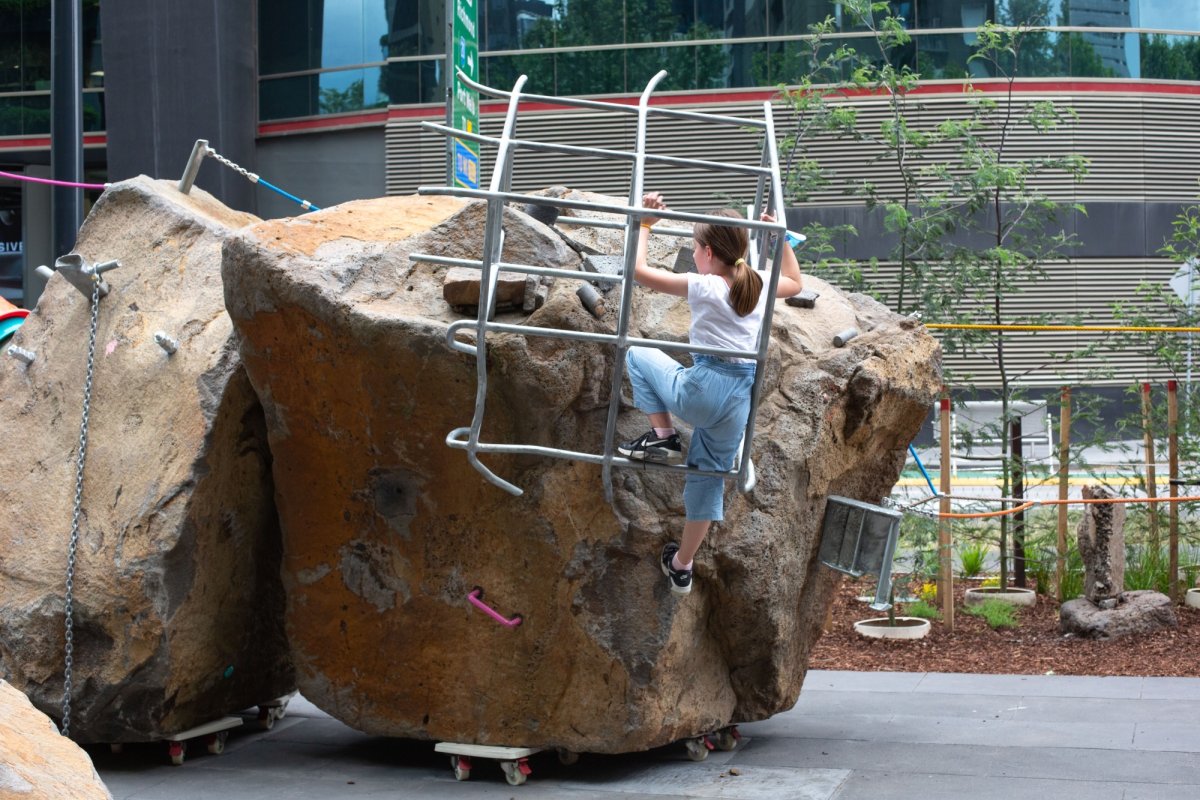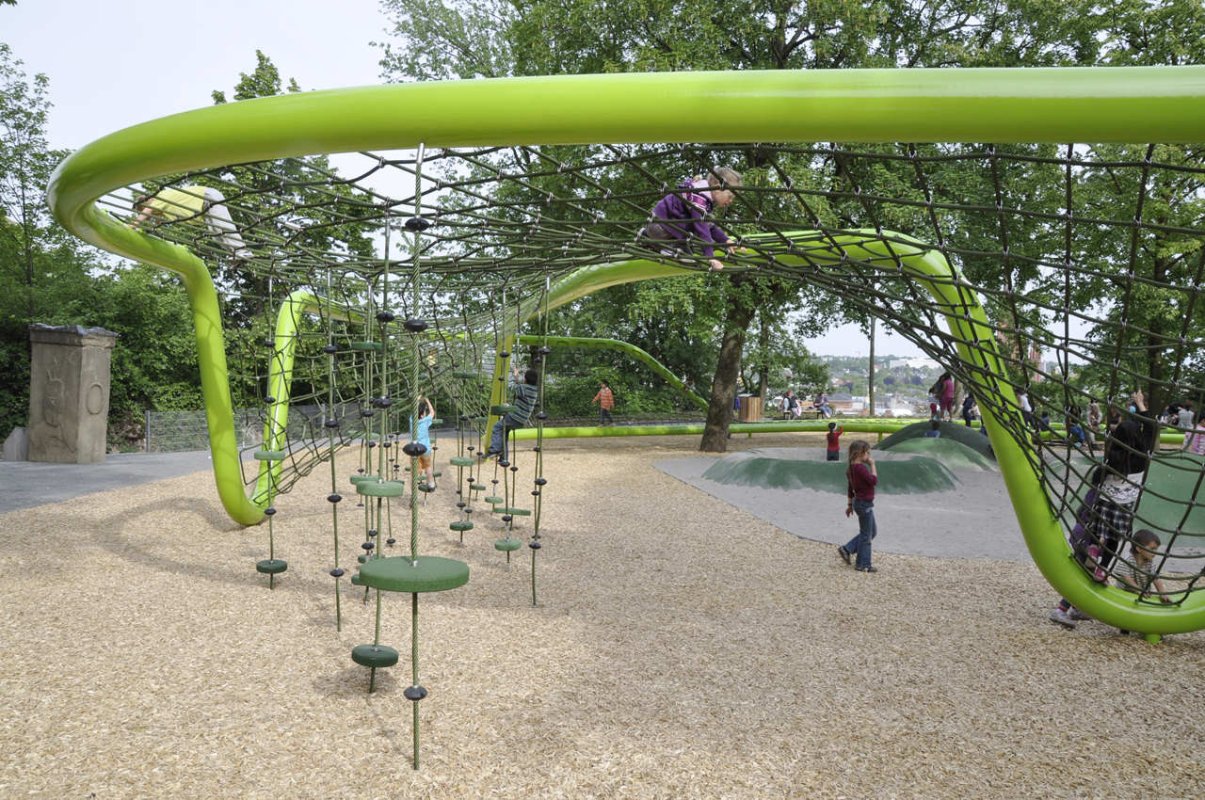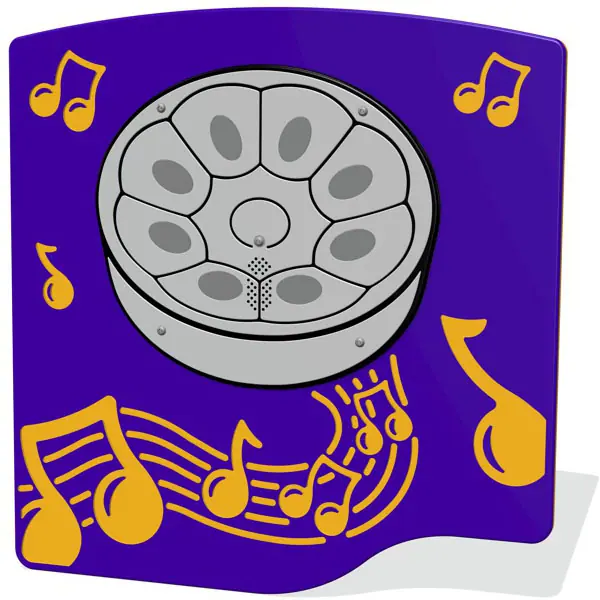No products in the basket.
In 1949, the Danish sculptor and architect Egon Möller-Nielsen created the sculpture, ‘Tufsen’, designed to bring together abstract art and play ‘based on a child’s desire to hide, slide and climb up high to feel that sense of danger.’ Somewhat amoebic in appearance, this artistic structure had the ulterior motive of also being an innovative ‘climbing frame’ offering tunnels, ledges and climbing angles for children.


More recently, Mike Hewson has used his engineering background to create unusual, and controversial, play spaces in Australia where ‘Kids clamber on unsecured lumber, wobbly-looking heaps of cinderblocks and climbing walls held together with bungee cords.’ Fortunately, the inherent dangers of his design are in fact an illusion as ‘while structures may appear poised to fall apart, roll away or tumble onto someone, they are firmly set in place… though things seem unsteady or lashed together, in reality they’re welded to, embedded in or chemically added to the stone.’
Meanwhile, the Schulberg Park in Germany ‘features a large climbing structure that surrounds a central naturalistic area. Two green steel pipes are the backbone for this structure of netting, which children can climb up and over, and even features vertical play pads. It is a beautiful homage to the connection between art, play, and nature.’

All exciting stuff and it can only be good that there are creative adults out there, hanging onto their wild kid imagination to combine with artistic talent for the creation of more innovative, challenging and inspirational play spaces.
However, not every council or school is able, or prepared, to find a specialist artist, sculpture or designer to create a play space! Better to use the resources already available (but often underrated) – the ideas and experience of the children who play, the parents who know their children’s capabilities and what they enjoy, the teachers who know how to develop learning safely through exploration, and the local designers who manifest the final playground.

The Belleville Park Playground project is a perfect example of how designers, architects, and the community can work together to create something totally unique. ‘The project’s designer did hundreds of hours of workshopping with local children and families to find what the community wanted from the park…The entire park is created from wood, and the design is modern enough that children perceive it as a ship, flying carpet, or forest – all at the same time…The freedom of design lends itself to imaginative play, and the natural elements fit right in with the gorgeous local greenery.’
This approach can be applied at any level, whatever the size of the project or budget – and sometimes the simplest ideas can be the most effective. There are so many reasonably-priced resources readily available nowadays to enable art and imagination to be incorporated into even basic play areas.
An obvious, and fun, place to start is with colour. Clever use of colour can liven up the dreariest space and transform it into an inviting area for adventure.
The colours around us have a direct effect on our emotions and energies. People have very individual and personal responses to colours depending on their preferences, past experiences and associations. However, warm colours usually promote more energetic and invigorating responses whilst cooler colours encourage relaxation and have a calming effect. Awareness of these colour influences can help ideas for creating different sections within a playground – making the space inclusive for all personalities, capabilities and moods of the day.
Colours choices, patterns and pictures can be incorporated into the play structures themselves and surrounding walls or fencing but there is also a huge range of surfacing materials available that can carry bespoke designs, lettering, games and pictures. What is more, these attractive, creative surfaces have the added bonus of being designed with safety as a top priority: comfort and support for feet, water drainage, plus ball bounce and slip resistance qualities are all incorporated.
These coloured coatings are made up of polyurethane paint which is combined with a mixture of sand and aluminium oxide. This is to achieve the required slip resistance qualities. Non-slip paint coatings can be applied to the polymeric rubber surfacing in a range of colours to enhance the performance qualities and to give the sports facility a fun and exciting appearance… the polymeric rubber system along with the macadam sub-base will be completely porous and SUDS compliant to allow water to easily drain through, preventing flooding in the area.’

Of course, the children themselves will exhibit multiple responses and engagement with the colours, patterns, pictures and designs the adults have selected to inspire play, exploration, investigation and interaction – but it is also important to provide opportunities for them to be creative in their own right. Play is, after all, the one opportunity for unguided development and the release of unique, personal, autonomous creativity.
Perhaps there could be a protected area of the playground with a display board for pictures, poems, stories and other artwork by the children. Areas for chalk art can also be incorporated into the ground space of the playground. This way professionally-produced snakes and ladders/chessboard/hopscotch/maps surfaces run alongside children’s copies of these games or their own interactive activity chalk designs.
Similarly, play panels manufactured from long-lasting HDPE can easily be attached to walls, posts and climbing structures, encouraging imagination and role play plus some exciting sensory stimulation devices. Alongside such play panels could be a giant chalk board which several children can use at once, either independently or in group design. Sand and water play stations also provide basic resources but inspire independent, individual exploration and discovery. Every day becomes a new design and discovery opportunity!
Of course, every playground needs the classic swings, slides and climbing apparatus – available in beautiful ranges of steel and sustainable timbers – but installations that inspire the imagination and artistic talent even more include structures such as performance platforms and stages, novel seating designs, clamber stacks and moveable units.
In conclusion, what a wonderful opportunity playground design offers for both children and adults to make the most of their artistic and imaginative talents!

